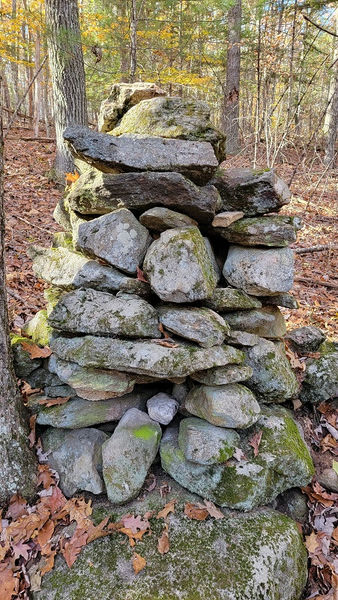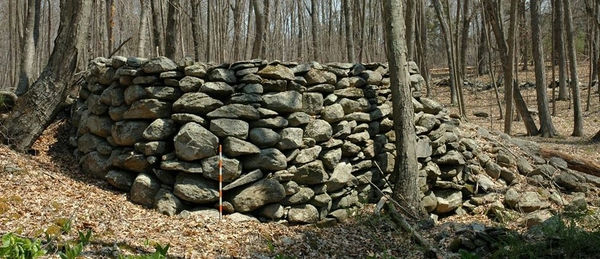

The action of the glacier also left New England’s soil permeated with stones, which needed to be cleared before planting could begin. They were often tossed in piles or built into the many stone walls we see scattered through the countryside. Some of the rock piles were used as boundary markers and recorded in early land records as “stake and stones” or heap of stones. Some stone piles that we see are too carefully constructed to fit these categories. We know, for instance that the Vikings built stone cairns as memorials or burials mounds. Native Americans, also built memorial cairns, each wayfarer adding a donation stone as he passed by. Archaeologists have found evidence of Indian burials under stone piles. Other piles are arranged in an array that indicates viewing important astronomical events. Additional investigation may provide answers to yet unknown uses of these constructions.
by Norman E. Muller
One curious lithic feature that the author has been intrigued about, and which may even be more significant than stone chambers, is what is called a platform cairn. This is a large, waist-high stone platform of dry stone masonry, sometimes measuring twenty or more feet to a side, and in form either rectangular, square, oval or some other shape. If constructed on a steep slope, the downhill side of the platform can be upwards of ten or more feet high, whereas the uphill side is waist high or less. The top surface of these platforms is usually flat and covered with smaller stones called paving, though a rounded surface is not unheard of, as the reader will soon discover.
Read full article (PDF): VERMONT PLATFORM CAIRNS By Norman E. Muller